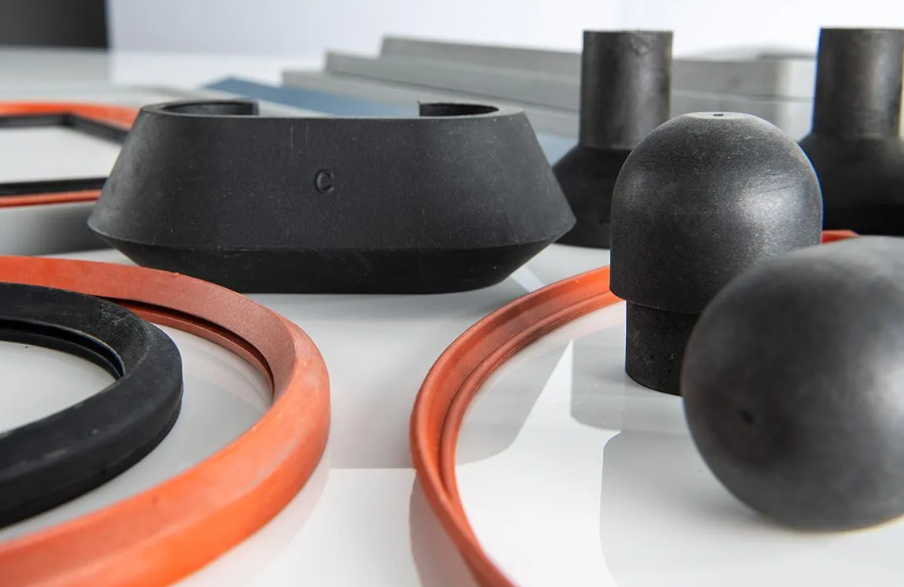Molded rubber products are an essential component in various industries, from automotive to medical, and from electronics to heavy machinery. These products are known for their durability, flexibility, and cost-effectiveness. When businesses require molded rubber parts for their operations, they often turn to manufacturers specializing in molded rubber products to create components tailored to precise needs.
In this article, we’ll explore what molded rubber products are, the common applications, the manufacturing process, and what to look for when choosing the right molded rubber products manufacturer.
What Are Molded Rubber Products?
Molded rubber products are parts and components created by forming rubber into specific shapes using molds. The process involves heating rubber materials, shaping them in a mold cavity, and allowing them to cool to form solid and resilient items. The process can include various techniques, such as injection molding, compression molding, and transfer molding, depending on the product’s requirements and the manufacturer's capabilities.
Common Applications of Molded Rubber Products
Molded rubber products are widely used across industries due to their versatility and reliability. Here are some of the most common applications:
- Automotive Industry: Seals, gaskets, bushings, and hoses.
- Electronics: Insulators, grommets, and cable connectors.
- Medical Devices: Medical-grade seals and stoppers.
- Aerospace: Vibration dampening mounts and seals.
- Construction: Shock absorbers and sealing gaskets.
- Industrial Machinery: Rubber rollers, bumpers, and bearings.
Each of these applications has specific requirements, such as heat resistance, flexibility, or chemical compatibility, which a molded rubber products manufacturer must address.
The Manufacturing Process of Molded Rubber Products
The manufacturing process for molded rubber products involves several key steps, each vital to ensuring high-quality and precision:
- Material Selection: The manufacturer first selects the type of rubber based on the product's intended use. Options include natural rubber, EPDM, nitrile, silicone, and others.
- Mold Design and Production: Custom molds are designed according to the product’s specifications, ensuring that the final output has the correct dimensions and functional properties.
- Molding Process:
- Compression Molding: Rubber is pre-formed and then placed into a heated mold. This method is suitable for larger and thicker parts.
- Injection Molding: Rubber material is injected into a mold under high pressure. It is ideal for producing high-precision and complex parts.
- Transfer Molding: This technique combines the advantages of compression and injection molding and is often used for parts requiring intricate designs.
- Curing and Finishing: The molded part is cured to enhance its strength and stability, then trimmed and finished to meet quality standards.
- Quality Control: Testing for durability, elasticity, and other key properties is conducted to ensure that the parts meet industry standards and customer specifications.
Key Qualities of a Reliable Molded Rubber Products Manufacturer
When selecting a molded rubber products manufacturer, businesses should look for certain essential qualities to ensure they receive high-quality components.
-
Expertise and Experience: Choose a manufacturer with a proven track record in producing molded rubber products for your industry. Experienced manufacturers understand the challenges and specific requirements of various applications.
-
Customization Capabilities: Every project is unique, so it’s crucial that the manufacturer can customize molds and materials to meet specific needs, whether that involves intricate designs, special materials, or unique performance characteristics.
-
High-Quality Materials: Reliable manufacturers source high-quality rubber materials and work with suppliers who provide materials that meet or exceed industry standards.
-
Advanced Manufacturing Techniques: A manufacturer equipped with modern molding technologies, such as advanced injection molding machines, can produce high-precision components quickly and cost-effectively.
-
Quality Control and Testing: An experienced molded rubber manufacturer will implement strict quality control and testing protocols. This includes testing for tensile strength, elasticity, chemical resistance, and durability to ensure each part meets quality expectations.
-
Environmental Responsibility: Many industries now prioritize environmental stewardship. Manufacturers who focus on sustainable practices, such as reducing waste, recycling rubber materials, and using eco-friendly chemicals, can add value to your project by minimizing environmental impact.
Top Benefits of Working with a Molded Rubber Products Manufacturer
Partnering with a reliable molded rubber products manufacturer provides several benefits to businesses, including:
- Cost-Effective Solutions: Custom rubber molding is often more cost-effective than other methods, especially for high-volume production.
- Enhanced Product Performance: High-quality molded rubber products enhance the performance and longevity of machinery and devices.
- Reduced Maintenance Costs: Durable rubber parts, such as seals and gaskets, are resistant to wear and tear, reducing maintenance costs.
- Efficient Production and Turnaround Times: Skilled manufacturers streamline the process to provide quick turnarounds, helping businesses stay on schedule.
Conclusion
Molded rubber products play a critical role across industries, offering high-performance, durability, and customization options to meet diverse operational needs. Choosing the right manufacturer ensures you receive components that meet exact specifications, withstand challenging conditions, and ultimately improve the efficiency of your systems. By prioritizing experience, quality control, and advanced manufacturing techniques, you can partner with a molded rubber products manufacturer who supports your goals and delivers products that stand the test of time.

